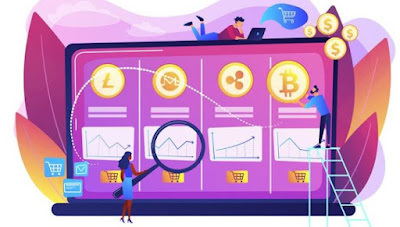Understanding Chainlink: A Comprehensive Guide on Trading LINK Tokens
Introduction
What is chainlink token where to buy chainlink token what exchanges supports the chainlink token how to trade chainlink token?
The chainlink token link is the native currency of the chain link ecosystem that seeks to provide an easy, quick and cheaper mechanism to sync off chain data with smart contracts, thereby providing a link between data from outside sources and into the smart contracts. Link has become a mainstream cryptocurrency and is used for payment of fees for utilizing the chain link ecosystem. Link will also be used for staking in the future, Link has managed to establish its place among the top 50 cryptocurrencies by market cap for a long time. Many institutions ranging from decentralized finance applications to supply chain solutions have adopted the chain link technology for integrating off chain data
chainlink was born in 2017 to enable hybrid smart contracts. The main issue with smart contracts is that they inhabit a closed ecosystem inside a blockchain network. This works fine as long as the blockchain does not need to interact with data from the outside world. But the integration of off chain data becomes an issue. chain link has become very popular as it solves this dilemma and provides a great use case for developers that helps in the integration of off chain data by the use of what is known as decentralized Oracle networks or Don's the native token of the chain link system is known as link that is an Aetherium based token and is used for paying fees and also for staking purposes inside the network. The nodes securing the network are paid fees in terms of the link token. The data system provided by chain link has diverse uses from decentralized finance applications that need continuous price feeds such as the urine finance of M synthetics to weather applications that need to monitor atmospheric data on a global scale.
The chainlink ecosystem is also compatible with multiple block chains such as Aetherium, Tara and Solana support for more blockchains will be added soon by the link ecosystem. chain link provides data feeds ensures randomness in smart contracts and also provides automated services for smart contract maintenance. chainlink utilizes a variant of the proof of stake system known as proof of reserve for securing the Oracle network. And so far, the network has been able to maintain integrity, which is why it is preferred and has become so popular among enterprise solutions. chain link also provides the ability for data providers to sell their data through chain link enabling monetization of data.
Talking about the token omics, the initial total supply of Link was 1 billion tokens, but it is reduced since then, as tokens get burned during transactions. The chain link token has a finite supply. The total supply is thus fixed at 1 billion as new coins cannot be created. The distribution mechanism is explained as 35% for node operators, another 35% for public sale, and 30% for research and development. The all time high price of one link was $52.70 on May 10 2021. It is currently trading at $15.23. The all time low price was 14 cents on November 29 2019. Comparing the all time low and the all time high price we get returns of about 12,125% which are very impressive returns, the link token has established its position as a leading cryptocurrency.
Now moving towards the supporting exchanges, the link token is available on most exchanges. It is a popular cryptocurrency and you can buy a link on some leading exchanges including gate.io Hell Bank bitmart by Nance Coinbase, oke X, Kraken and many more. You can buy link either through cash via peer to peer credit or debit cards for through other cryptocurrencies. You can also buy link through decentralized exchanges such as uniswap but we will be using violence to buy link from there.
I. What is Chainlink?
Key facets of Chainlink include:
II. How Chainlink Works
III. Trading Chainlink (LINK)
1. Choose a Reliable Exchange:
2. Wallet Setup:
3. Fundamental Analysis:
4. Technical Analysis:
5. Risk Management:
6. Stay Informed:
7. Diversify Your Portfolio:
Conclusion


Comments
Post a Comment